
Garden of Earthly Delights- the fountain of divine influence: the meaning of the gemstones |
Gemstones are used quite intentionally here, and with some specific significances.
On the left-hand side, we seek two transparent crystals, most likely beryl (although the pink one could be tourmaline, the blue crystal is almost certainly aquamarine.) These two crystals represent the earthly or natural (blue) and spiritual (pink) realms.
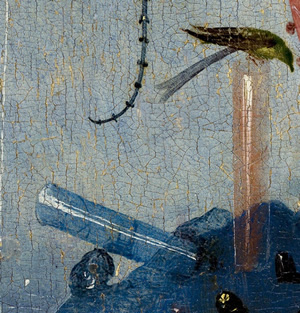
The blue crystal, which is tipped on its side, shows a more or less horizontal position, consistent with the natural or earthly realm, and signifying its lower level. The pink crystal, which is vertical, shows the heavenly influence descending, and indicates matter under a divine influence. It has a green bird perched on it, emphasizing its relationship to the spiritual. ( See The Esoteric Bosch for more on this symbolism of birds.)
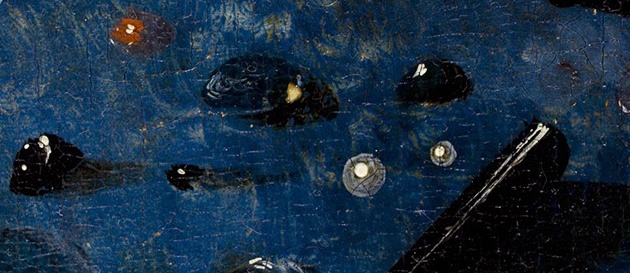
Moving into the foreground of the picture plane (which always, in this panel, represents a dissent to a lower level) we have, unambiguously, a black tourmaline crystal — schorl— which, because of its color and opacity, represents the lowest level of influences. We also begin to see pearls scattered among the gemstones, and (again, refer to The Esoteric Bosch) as we know, pearls represent lies. The point is that lies arise immediately, even directly under the influence of the highest spiritual inflow.
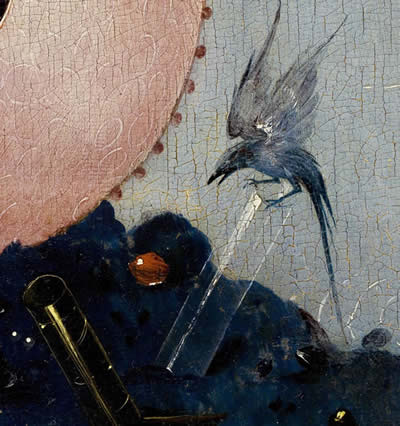
On the right side of the divine fountain, a bird — earthly in influence, as shown by its blue color— perches on top of a transparent crystal, which represents the highest possible ideal, that is, transparency in terms of personhood in the receipt of God's word. Transparency, in other words, is the highest quality to which an earthly being can aspire.
The exact meaning of the yellow crystal in the foreground is unclear, but it is almost certainly, once again, beryl, variety heliodor, which is of the sun. As such, all of the natural (as opposed to uncut) crystals represent higher influences of various kinds, all of them gradually degrading. Because they combine the elemental crystalline structure as found in nature, untouched by man, they represent a kind of ideal.
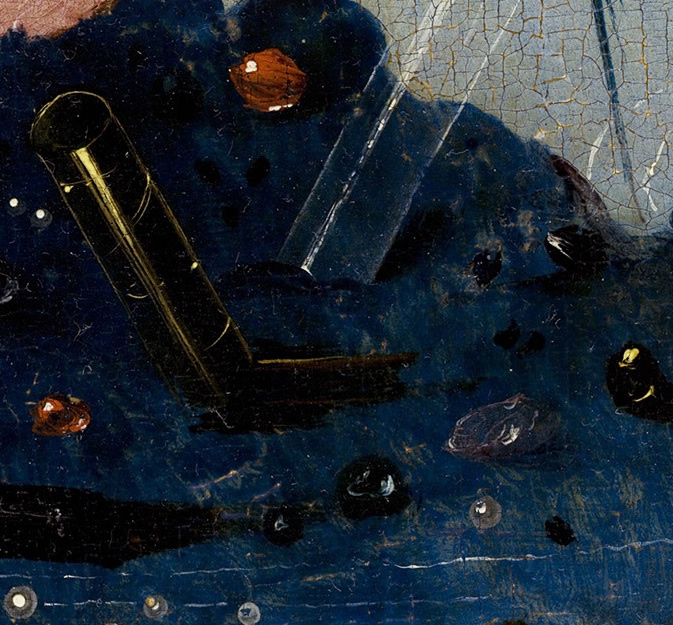
Of interest to mineralogy buffs is the pink fragment in the bottom right-hand section of the above picture. In my opinion it is almost certainly kunzite, a variety of spodumene, and it remains uncut — representing something still in its natural state, but which will eventually be handled by mankind. It could also represent the fragmentation of one of the whole crystals above it.
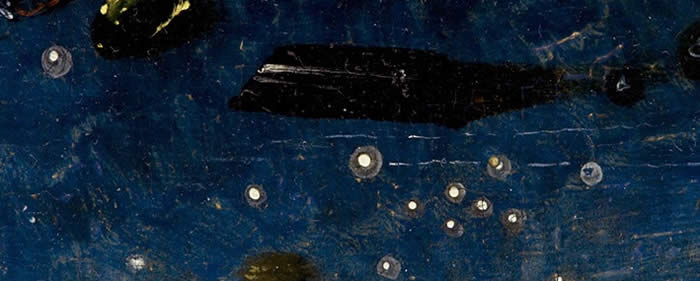
The number of pearls increases as one moves downward (again, lower) through the picture plane, representing an increase in the number of lies associated with ever greater amounts of contact between the divine and the material.